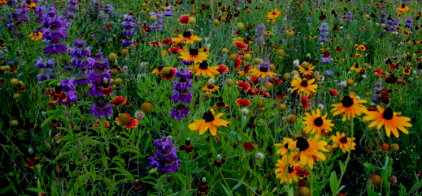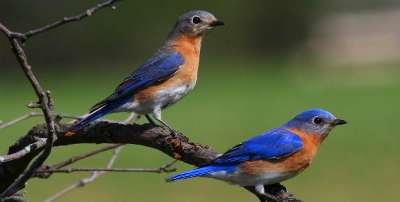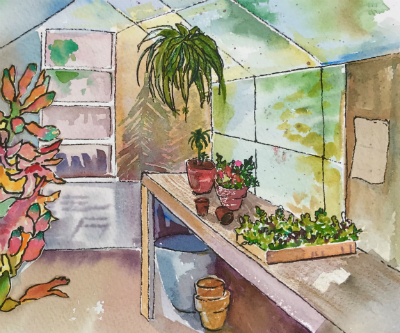
bringing nature, nurseries and gardeners together August 21, 2020
|
|
Barton Springs Nursery is "brimming with unusual, native and hard-to-find botanical treasures," writes manager William Glenn. Texas bluebells (Eustoma grandiflora), a rare and elegant Texas wildflower. Bunch cutgrass (Leersia monandra) a dry, shade evergreen grass. Agarita (Berberis trifoliolata), bees love it. Dwarf Sabal (Sabal minor), a Texas jewel, perfectly sized for small yards. BSN / The Natural Gardener is hiring. Applicants should expect 'a quiz on general plant knowledge' prior to an interview: TNG Far South Nursery has a fine selection of tough, drought-tolerant treasures: nolina, sotol, agave and a variety of cacti. Far South / The Wildflower Center is open, but reserve a place ahead of time: admissions / ❦

Native Plant Gardening Series: learn from the experts at the Wildflower Center how to transform your garden into a beautiful native-plant landscape. Sept 12, 13, 26. Individual classes: $30; whole package: $162. Wildflower Center ❦

The Ney Museum gardens: join Mino Giunta in this charming educational video tour through the native prairie restoration project that he is working on for the Parks and Recreation Department. Ney Gardens ❦
 Colors from nature: in her new home design book 'Biophilia,' author Sally Coulthard encourages readers to choose paints and colors that reflect the rich variety found in the natural world. House & Garden ❦ Colors from nature: in her new home design book 'Biophilia,' author Sally Coulthard encourages readers to choose paints and colors that reflect the rich variety found in the natural world. House & Garden ❦

Texas Bluebird Society: thanks to reader Pauline Tom for suggesting link to the list of Texas native plants that provide food for the Eastern Bluebirds. Bluebird Society ❦
 Central Texas Gardener: "Never before have I seen so many butterflies in one garden as I did last October when the CTG team visited Ingrid and Doug Green’s garden west of Lago Vista," writes Linda Lehmusvirta. CTG Blog ❦ Central Texas Gardener: "Never before have I seen so many butterflies in one garden as I did last October when the CTG team visited Ingrid and Doug Green’s garden west of Lago Vista," writes Linda Lehmusvirta. CTG Blog ❦
by Amanda Moon
For years now, the first thing my husband and I do when we move to a new location is put up a greenhouse. Actually, for the last two homes one of the main criteria when house-hunting was where a greenhouse could be placed.
For me this structure is not a luxury, but a necessity for many reasons from getting a jump on spring veggies to housing my collection of cacti that need protection from our occasional rain events.
Greenhouses don’t have to be fancy. You can frame out a small one using cedar (what I have now), buy a kit or just borrow a pipe bender and create your own hoops from metal pipe. I have even made inexpensive cold frames out of PVC, bent over a frame and covered in plastic for winter, shade cloth for summer.
The internet is full of plans for greenhouses from the very basic to the most elaborate. An unused shed can even be converted by replacing the metal roof with fiberglass. One reason that every gardener should have a greenhouse is that you are able to save money by growing your own plant starts. Controlling your environment allows you to turn a few dollars worth of seeds into a beautiful vegetable garden or bed of flowering annuals. Many seeds need light to germinate and even those that don’t can stretch immediately if they don’t have enough light right out of the shoot.
Too much sun, on the other hand, can burn the tender seedlings, especially in the summer time. A greenhouse with a shade cloth allows you the perfect environment for seedlings to grow strong and healthy.
Cuttings of pass-along plants are also easier to start as many need a good humid environment for their leaves to stay plump until they begin to set roots. A mist system can even be set up that makes rooting cuttings even easier. Getting a jump on spring and fall veggies is another great reason to own a greenhouse. In a greenhouse you can protect your tender vegetable starts from too much heat in the summer (using a shade cloth and fan) and from freezing temps in the winter using a heater and the solar heat from having the greenhouse closed up during the day. Many seeds will not germinate if it is too cold and so keeping them toasty warm in January means early tomato transplants out by late-February (with protection of course) and a longer, healthier tomato growing season.
I also use my greenhouse as an excuse to collect more orchids, cacti and other winter tender plants than I probably don’t need. Many orchids need a certain amount of humidity to thrive as well as a little shade. My cacti don’t mind the extra humidity and also need a little shade, but they can’t tolerate the heavy rain storms that we can get here.
So for both, the greenhouse is the perfect place to showcase them. In winter I also stuff my greenhouse with my citrus trees for cold protection but with sun still available. It keeps them just warm enough that I haven’t lost one yet. Lastly, my greenhouse is my 'she shed.’ It is some place that I can go and just be. It is quiet and peaceful and I am surrounded by beauty. To me, that is the most important reason that every backyard gardener should own one. ❦ |
 It's About Thyme Legacy Publications.
Contact newsletter editor Darrel Mayers with any ideas for articles or interesting links at internationalrain@yahoo.com (hitting 'reply' to this email won't work) |
|
|
